- Home
- Conn Iggulden
The Dangerous Book of Heroes Page 4
The Dangerous Book of Heroes Read online
Page 4
In the 1920s, Calvin Coolidge once swung around in his chair and looked through the windows of the Oval Office at the Washington Monument. “He’s still there,” that president commented. So he is, another hundred years later.
Recommended
Patriarch: George Washington and the New American Nation by Richard Smith
Crucible of War: The Seven Years’ War and the Fate of Empire in British North America, 1754-1766 by Fred Anderson
The Life of George Washington by Jared Sparks et al.
USS Constitution, Naval Shipyard, Boston, Massachusetts
Mount Vernon Estate, Virginia
Sulgrave Manor, Sulgrave, Northamptonshire, U.K.
Sir Ranulph Fiennes
Through obsession, daring and sheer talent, the men and women in this book often achieved extraordinary things. They saved India, escaped from Colditz, climbed Everest, and even defeated Napoléon. There is a reason for including such lives that goes beyond a collection of “ripping yarns from history.” In this day and age, it is all too easy to become mired in paying the mortgage, getting promoted, filling the hours with hobbies and anything else we can find. There is a place for such things, of course—we cannot all climb Everest.
When disaster strikes, each of us is capable of courage and quiet dignity. Yet somehow, it is harder without these stories and others like them. Men and women alike take strength from the courage of Edith Cavell or the insane recklessness of Teddy Roosevelt or, indeed, Ranulph Fiennes. Put simply, their lives help us to endure the hard times. As Prince Charles once said: “My admiration for Ranulph Fiennes is unbounded and thank God he exists. The world would be a far duller place without him.”
Ranulph Twisleton-Wykeham-Fiennes was born in Windsor on March 7, 1944. His father commanded the Royal Scots Greys Regiment in World War II and died without seeing his son. In fact, Ranulph Fiennes’s first claim to fame was being the youngest posthumous baronet in existence.
Copyright © 2009 by Graeme Neil Reid
His first years were spent in South Africa, in idyllic surroundings. He ran around with a gang of local lads, sometimes carrying bamboo spears. They took turns throwing them at one another, protected by a trash-can lid.
In 1952, Ranulph was sent as a boarder to Western Province Preparatory School. When he won the divinity prize, he was so pleased he decided briefly to become a priest. That dream fell to pieces when he was taken to see a film on the ascent of Mount Everest in 1953. Given the man he became, it is not fanciful to suggest that the film shaped his life.
The following year his mother took the family home to England, drab and gray to a boy who had known the sun of South Africa. She rented a small cottage, and he was sent to board at Sandroyd School near Salisbury. After a miserable start, he grew to love his time there, though mathematics was always a particular challenge. He found that his classmates would listen to stories based in South Africa, and he charged them squares of chocolate to hear them. He formed a gang named the Acnuleps (Latin for cave spelled backward), who signed their rules in blood, as boys tend to do. They went on to fight another gang, which led to the leaders being caned and the gangs disbanded.
After prep school, Ranulph went to Eton, where he was bullied and made thoroughly miserable. It is interesting to consider the old myth that the British Empire was won on the playing fields of Eton. The implication is of fair play and teamwork, but there may be another truth underlying the idea. Boys’ private schools can be hellish places, but those who survive them are rarely worried by any other difficulty in later life.
At Eton, he made the boxing team and learned to love history. He was thrilled at news of Edmund Hillary’s expedition to the South Pole. At sixteen, he was diagnosed with rheumatic fever and told to rest for six months. He spent part of that golden spring and summer learning to make explosives in a gardener’s shed at home.
Back at school, he moved up to light-heavyweight boxing and he and a friend began to climb the school buildings at night, despite the threat of expulsion for anyone caught. One night they successfully left a toilet seat and a trash-can lid on the summit of the school hall, but on another occasion they were discovered sitting on a roof. Ranulph got away without being caught, but his friend was found and questioned by the headmaster. As it turned out, the head had been a keen climber in his youth and was more interested in their methods than in punishment.
After Eton, Ranulph joined the Royal Scots Greys tank regiment in 1963. He trained in Germany on seventy-ton Centurions. At six feet two, he had grown to the point where he could box in the heavyweight division. He also joined the cross-country running team and the ski team and formed a canoe club. Under his supervision, the men would regularly paddle a hundred miles a day. To Scots, his name was pronounced “Feens,” and they described it as “Mr. Feens’s Concentration Camp.”
From the Scots Greys, he applied to join the Special Air Service. To prepare, he trained alone in the Brecon Beacons and took a parachuting course. The highest peak in the Brecons is Pen-y-Fan, and one part of the training was to run up and down it three times in eight hours. Another unusual part of SAS training was planning and carrying out a bank raid in Hereford. To his great embarrassment, he managed to leave the plans in an Italian restaurant. They were handed to the police and the plans reported in newspapers around the country. Despite that incident, Fiennes passed the famously harsh training and specialized in demolitions.
His career with the SAS came to an abrupt end in 1966. A friend of his told him about a film set in Castle Combe, Wiltshire. Twentieth Century-Fox was about to begin shooting Doctor Dolittle and had built sets and a twenty-foot-high concrete dam in the area, ruining the peace of an ancient English village. Fiennes agreed to help destroy the dam and also to tip off an ex-SAS man named Gareth Jones, who had become a journalist. Instead, Gareth Jones told the Daily Mirror, and they called the police. With explosives and detonators, Fiennes went in darkness to Castle Combe, unaware that police cars were waiting for him. His own car was an ancient and unreliable Jaguar, which he parked nearby and then walked in across the fields.
Copyright © 2009 by Graeme Neil Reid
Unseen, he and two friends laid explosive charges as well as gasoline flares on timers to lure away the film company’s security men. As they lit the fuses, the night was shattered by police with dogs. The dam was destroyed in the explosion that followed, but the trap had been sprung.
Interestingly, Fiennes had been trained to avoid exactly this sort of capture. He submerged himself in the river and made his way in darkness back to his waiting car. However, it wouldn’t start so he was stuck. Things were not looking good for the escape when a police car came up and parked next to it. Trying to brazen it out, Fiennes asked the policemen if they would help him start his car. He was arrested.
For his efforts that night, Fiennes was expelled from the SAS and demoted from captain to second lieutenant. He rejoined the Scots Greys and became engaged to his childhood sweetheart, Virginia “Ginny” Pepper, before traveling with his regiment to Oman in Arabia. He took part in active fighting there and won the Sultan’s Medal for bravery. At the same time, he was looking ahead to a life after the army, hoping to make his later career with exploration and record breaking. On leave, he made preparations for an expedition to follow the Nile from the mouth, near Alexandria, to the source, two thousand miles south. He assembled a group of like-minded adventurers and used Land Rovers and hovercrafts to reach the source successfully, following in the footsteps of earlier adventurers such as Richard Francis Burton. The Nile trip would be the first of many such expeditions.
After his tour in the army ended, he needed to earn money, and a chance came with an advance to write a book on the Nile expedition. Fiennes wrote it in six weeks, while his fiancée researched the history. It was his first experience of publishing. His plan was to make a living through expeditions and writing about them. However, his drive to travel and explore meant that he and Ginny separated for a time, as he did not seem
ready to marry.
Alone again, Fiennes joined the R Squadron of the Territorial Army, who acted as reinforcements for the SAS in time of war. The physical tests were the same as for the SAS, and he passed the grueling ordeal. At the same time, he set about assembling a team for an expedition to Norway. The plan was to free-fall and parachute from a small Cessna plane onto Europe’s highest glacier. The Sunday Times referred to it as “the World’s Toughest Jump” and paid to cover the event.
Fiennes was first out of the plane and quickly reached terminal velocity of 120 miles per hour before pulling his rip cord and making a safe landing in the drop zone. The rest of the team came down in two runs, and from a safe base they began to climb and survey the area. A storm came in and almost killed them, but they survived to get down. His career as a renowned explorer had begun in earnest. Ten days after his return to England, he married Ginny.
In the early 1970s he was asked to audition for the part of James Bond. Producer Cubby Broccoli said Fiennes had a face and hands like a farmer and chose Roger Moore instead. It’s interesting to speculate how different the films would have been with Fiennes as the hero. Instead, he took part in unmapped river expeditions across British Columbia, where he survived rapids and moose stew. The BBC accompanied him to make a documentary, and although this meant he didn’t have to find sponsors, he was unhappy with the final programs, as they portrayed him as both cruel and incompetent. Yet the audiences were eight million for each episode, and he actually found sponsors easier to find afterward.
To supplement his income, Fiennes began to give lectures. He wrote about the Canadian experience and for years planned what would become one of his most famous exploits, the attempt to circumnavigate the world around both poles. The Transglobe Expedition of 52,000 miles would last from 1979 to 1982 and lead to Fiennes and Charlie Burton being the first men to reach both poles overland.
In most lives, that single achievement would have been enough to make him what Guinness World Records once called “the greatest living explorer.” Yet other, more astonishing events were still to come. Fiennes continued to write, uniquely qualified to produce a book about Robert Falcon Scott’s tragic race to the South Pole. His life had brought him fame, and he traveled around the world to give lectures. He took a job for a time with Occidental Petroleum, but it was always with an eye to planning the next great expedition.
In 1992 he discovered the lost city of Ubar in Oman, previously believed to be a myth. He went on to make the first unsupported crossing of the Antarctic continent on foot. He endured heat and cold and continued to demonstrate what a human being can do in extreme conditions.
Copyright © 2009 by Graeme Neil Reid
In 2000 he was involved in a solo, unsupported attempt to walk to the North Pole. Disaster struck when his sledge fell through the ice and he suffered frostbite in his fingers trying to pull it out. He had known this danger before and found that windmilling his arms restored circulation, but on that occasion it didn’t work. His fingertips had frozen solid. The attempt had to be abandoned, and by the time he came home, the first joints of all the fingers on his left hand had died. Amputation was the only answer, but his surgeon wanted to wait for five months to allow as much skin as possible to recover. Fiennes found the pain of jarring the fingertips excruciating and decided to cut them off in his toolshed. His first attempt, with a hacksaw, was too slow and agonizing, so he used a Black & Decker fretsaw. Strangely enough, Black & Decker have yet to use this in their advertising. He also lost a toe to frostbite; it came off in the bath and he put it on the side and forgot about it until his wife found it lying there.
In 2003, Fiennes had a heart attack and endured a double bypass operation. Months later, he wanted to raise money for the British Heart Foundation and planned a series of seven marathons in seven days on seven continents. At the time, he asked his doctors whether such activity would put too much strain on his heart. They replied that they had no idea—no one had ever tried such a thing before. In November of that year he completed all seven with his running partner, Mike Stroud.
In 2005 he came to within a thousand feet of the peak of Everest. He tried again in 2008, at age sixty-four, but bad weather and exhaustion overcame him.
One of the strangest things about him is that despite the similarities to other heroes in this book, Fiennes is always understated, softly spoken, and modest about his achievements. He is certainly a man driven to push himself to extraordinary lengths, to such a degree that he becomes not so much an inspiration as a force of nature. His attitudes to trials and hardship are a pleasant antidote to some of the touchy-feely aspects of modern society. In short, he is not the sort of man to whom the “compensation culture” caters. We do need such men, if only to highlight the silliness of some of the other sort.
Recommended
Living Dangerously and Mad, Bad and Dangerous to Know by Ranulph Fiennes
Captain Sir Richard Francis Burton
Richard Francis Burton was born in Devon, England, in 1821. Victoria came to the British throne in 1837, when he was just sixteen, so he was in some ways the archetypal Victorian scholar-adventurer. In his life, he was a soldier, a spy, a tinker, a surveyor, a doctor, an explorer, a naturalist, and a superb fencer. As an under-cover agent, he was instrumental in provinces of India coming under British control, playing what Kipling called “the Great Game” with skill and ruthlessness. In recent times, Burton was one of the inspirations for Harry Flashman in the books by George MacDonald Fraser.
Burton spoke at least twenty-five languages, some of them with such fluency that he could pass as a native, as when he disguised himself as an Afghan and traveled to see Mecca. He spent his life in search of mystic and secret truths, at one point claiming with great pride that he had broken all Ten Commandments. In that at least, he was not the classic Victorian adventurer at all. Burton always went his own way. When he was asked by a preacher how he felt when he killed a man, he replied: “Quite jolly, how about you?”
At various points in his life, he investigated Catholicism, Tantrism, a Hindu snake cult, Jewish Kabbalah, astrology, Sikhism, and Islamic Sufism. He was convinced that women enjoy sexual activity as much as men, a very unfashionable idea in Victorian England. He enjoyed port, opium, cannabis, and khat, which has a priapic effect. He was six feet tall, very dark, and devilishly handsome, with a scar from a Somali spear wound on his cheek that seemed only to add to his allure. In short, he was a romantic and a devil, a dangerous man in every sense.
After Richard was born, his parents moved to France in an attempt to ease his father’s asthma. Two more children were born to them there: Maria and Edward. Richard showed a remarkable facility for languages from an early age, beginning Latin at the age of three and Greek the following year.
The two boys were also taught arms as soon as they could hold a sword. They thrived on rough play and, at around the age of five, knocked their nurse down and trampled her with their boots. They fought with French boys and were constantly beaten by their father, but to little effect. Their tutor took all three children to see the execution by guillotine of a young Frenchwoman. This did not produce nightmares, however, and the children later acted out the scene with relish.
At the age of nine, Richard used his father’s gun to shoot out the windows of the local church. He lied, stole from shops, and made obscene remarks to French girls. His appalled father realized that France was not producing the young gentlemen he had wanted, so he packed up and took the family back to England.
At home, Richard made new enemies at school, until at one point he had thirty-two fights to complete. In frustration, the senior Burton decided to take his family back to France. They settled at Blois, where the children were taught by a Mr. Du Pré and a small staff. They learned French, Latin, Greek, dancing—and, best of all, fencing. Both boys excelled with foils and swords.
It was perhaps their father’s restless spirit that would infect Richard with the desire for constant movement. From Bloi
s they went to Italy, where Richard learned the violin until his master said that while the other pupils were beasts, Richard was an “archbeast.” In reply, Richard broke the instrument over the master’s head.
The family moved on to Siena, then Naples, where the boys learned pistol shooting, cockfighting, and heavy drinking. Cholera swept Naples, and out of ghoulish curiosity, Richard and Edward dressed as locals and helped to remove the dead to the plague pits outside the city. They also discovered prostitutes and spent all their pocket money on them.
From a young age, the brothers were determined to enter the military. Their father was equally determined that they become clergymen. To that end, he sent Richard to Oxford University and Edward to Cambridge, splitting them up for their own safety. Other tutors were engaged, and it was then that Richard met Dr. William Green-hill, who spoke not only Latin and Greek fluently but Arabic as well.
Despite his delight in languages, Burton disliked Oxford intensely. He attempted to arrange a duel on his first day, only to be ignored. He said later that he felt he had fallen among grocers. He hated the food, the beer, and the monotony. Annoyed by the hostility toward his dark and foreign appearance, he kept his door open but left a red-hot poker in the fireplace to repel unwanted visitors. He became determined to have himself expelled and broke every rule he could find, but at first the university ignored his excesses. Over the winter holidays in London, Richard and Edward met the sons of a Colonel White, from whom they heard tales of service in India and Afghanistan, where British forces had recently been defeated with great losses. Burton redoubled his efforts to be thrown out of Oxford, going to a horse race after being forbidden to attend. Called before the university authorities, Burton launched into a long speech about morality and trust and showed no remorse. He was expelled at last and left Oxford riding on a tandem-driven dog cart, blowing a coaching horn.

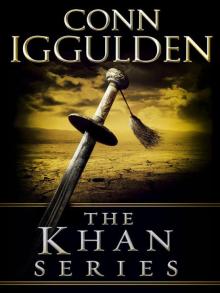 The Khan Series 5-Book Bundle
The Khan Series 5-Book Bundle Tollins 2: Dynamite Tales
Tollins 2: Dynamite Tales Tollins: Explosive Tales for Children
Tollins: Explosive Tales for Children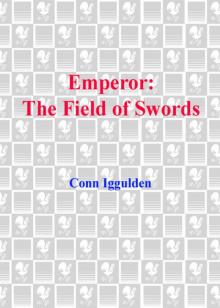 The Field of Swords
The Field of Swords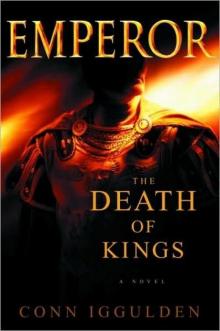 The Death of Kings
The Death of Kings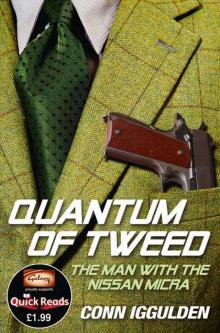 Quantum of Tweed: The Man With the Nissan Micra
Quantum of Tweed: The Man With the Nissan Micra Bones of the Hills
Bones of the Hills Genghis: Birth of an Empire
Genghis: Birth of an Empire The Gates of Rome
The Gates of Rome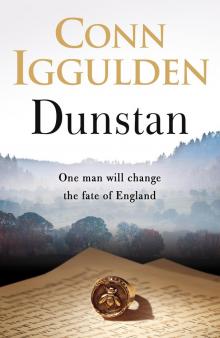 Dunstan
Dunstan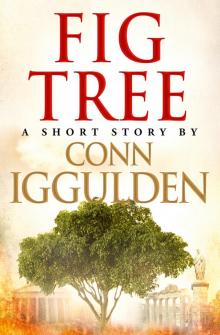 Fig Tree
Fig Tree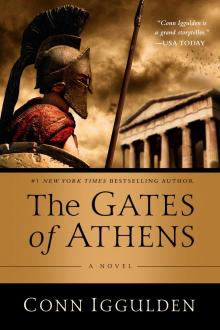 The Gates of Athens
The Gates of Athens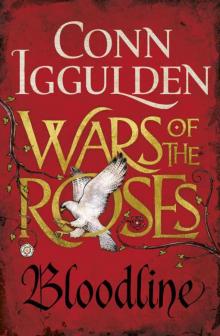 Stormbird
Stormbird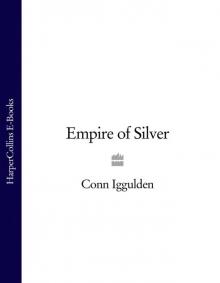 Khan: Empire of Silver
Khan: Empire of Silver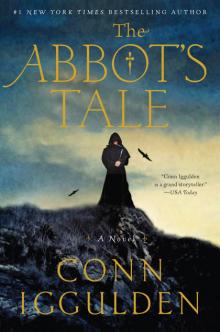 The Abbot's Tale
The Abbot's Tale Gengis: Lords of the Bow
Gengis: Lords of the Bow The Gods of War
The Gods of War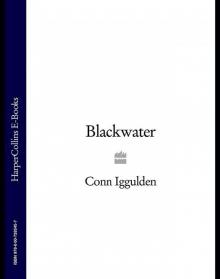 Blackwater
Blackwater Ravenspur: Rise of the Tudors
Ravenspur: Rise of the Tudors Wars of the Roses: Trinity (War of the Roses Book 2)
Wars of the Roses: Trinity (War of the Roses Book 2) The Gods of war e-4
The Gods of war e-4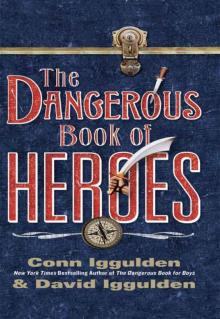 The Dangerous Book of Heroes
The Dangerous Book of Heroes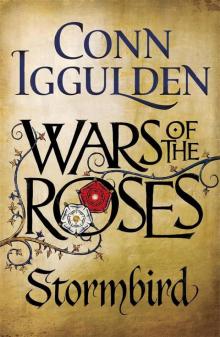 Stormbird wotr-1
Stormbird wotr-1 Emperor: The Death of Kings
Emperor: The Death of Kings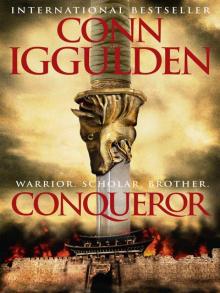 Conqueror (2011) c-5
Conqueror (2011) c-5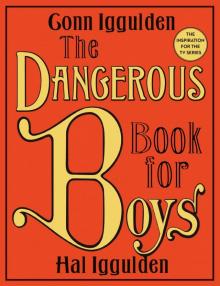 The Dangerous Book for Boys
The Dangerous Book for Boys Genghis Lords of the Bow
Genghis Lords of the Bow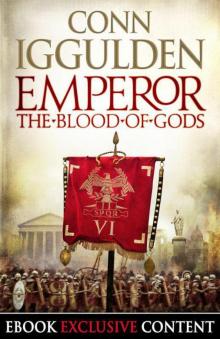 Emperor: The Blood of Gods (Special Edition) (Emperor Series, Book 5)
Emperor: The Blood of Gods (Special Edition) (Emperor Series, Book 5)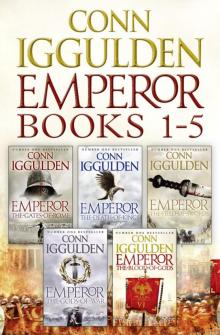 The Emperor Series: Books 1-5
The Emperor Series: Books 1-5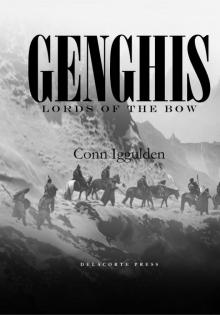 Lords of the Bow c-2
Lords of the Bow c-2 Lords of the Bow
Lords of the Bow Quantum of Tweed
Quantum of Tweed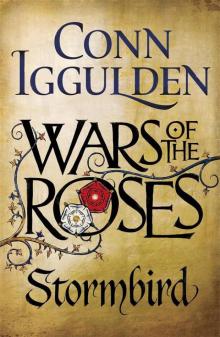 Wars of the Roses 01 - Stormbird
Wars of the Roses 01 - Stormbird Empire of Silver c-4
Empire of Silver c-4 Birth of an Empire
Birth of an Empire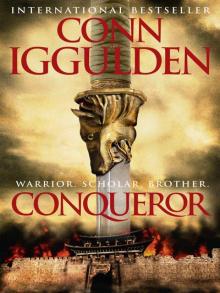 Conqueror (2011)
Conqueror (2011)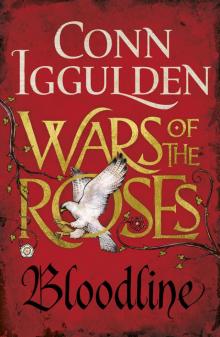 Wars of the Roses: Bloodline: Book 3 (The Wars of the Roses)
Wars of the Roses: Bloodline: Book 3 (The Wars of the Roses) Bones Of the Hills c-3
Bones Of the Hills c-3 Empire of Silver
Empire of Silver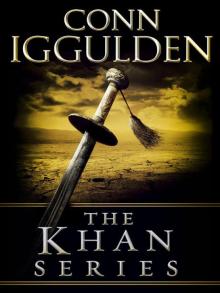 The Khan Series 5-Book Bundle: Genghis: Birth of an Empire, Genghis: Bones of the Hills, Genghis: Lords of the Bow, Khan: Empire of Silver, Conqueror
The Khan Series 5-Book Bundle: Genghis: Birth of an Empire, Genghis: Bones of the Hills, Genghis: Lords of the Bow, Khan: Empire of Silver, Conqueror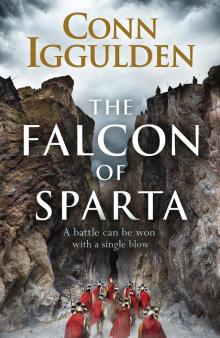 The Falcon of Sparta
The Falcon of Sparta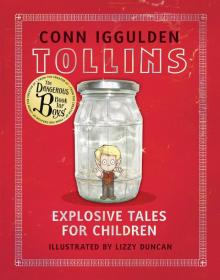 Explosive Tales for Children
Explosive Tales for Children